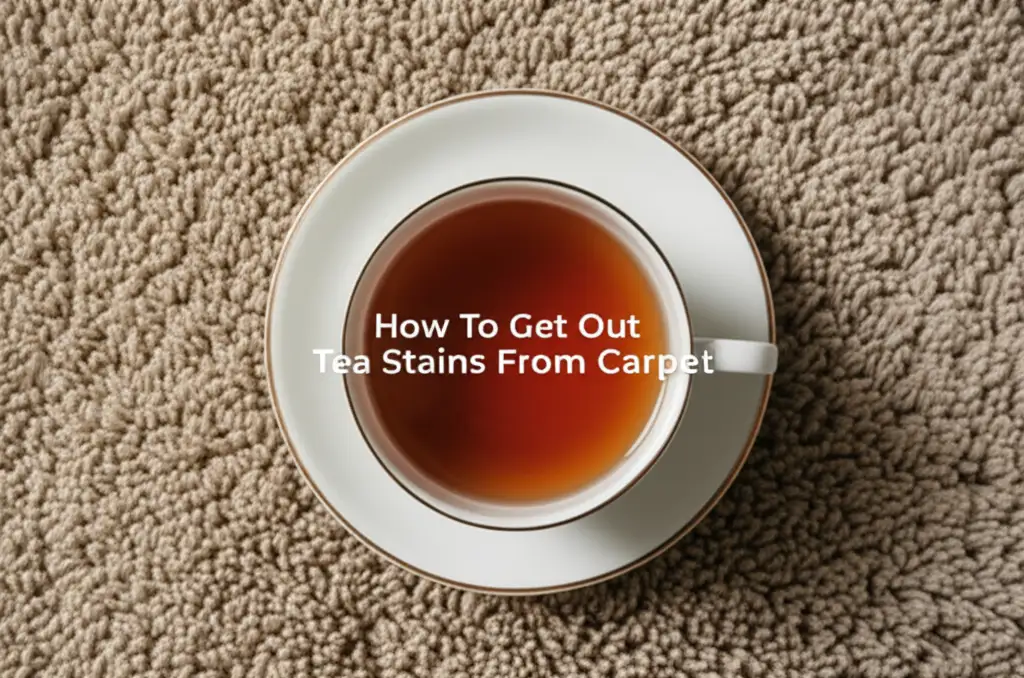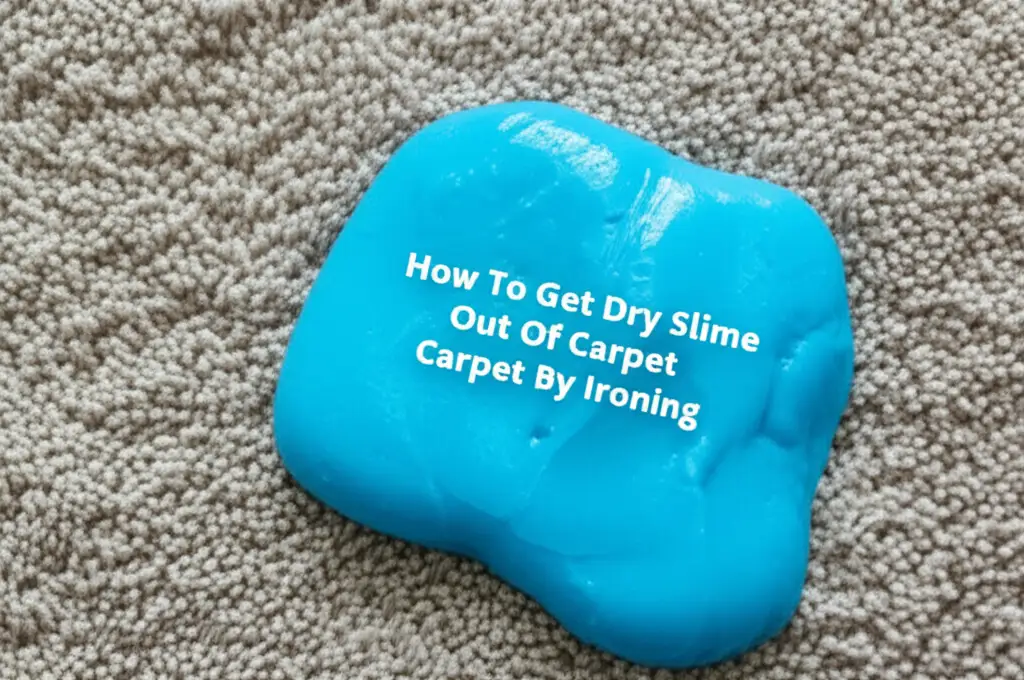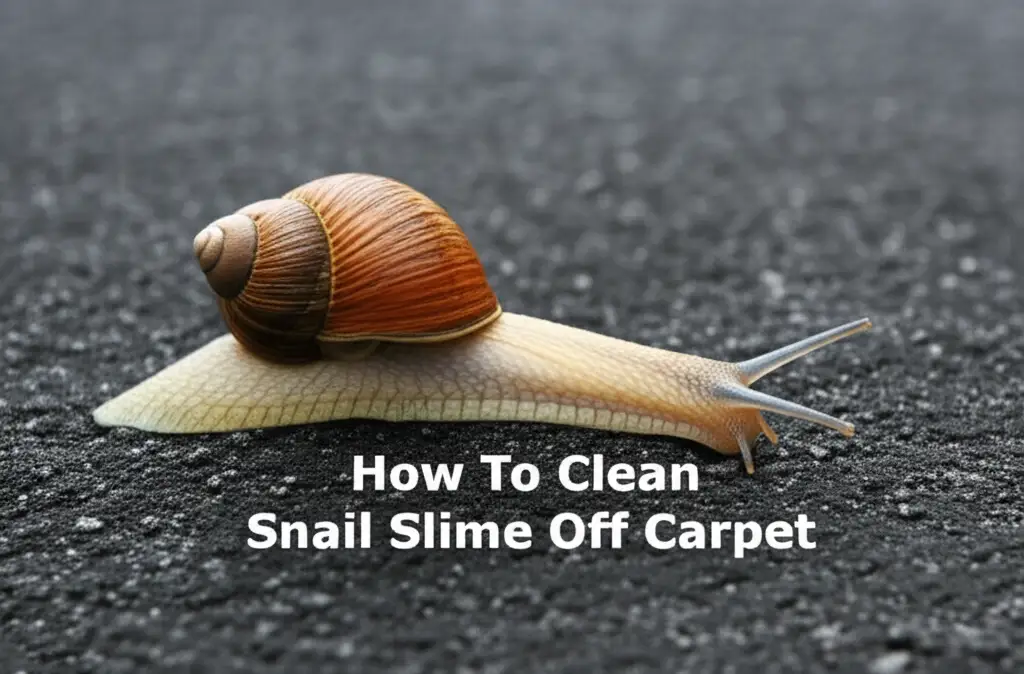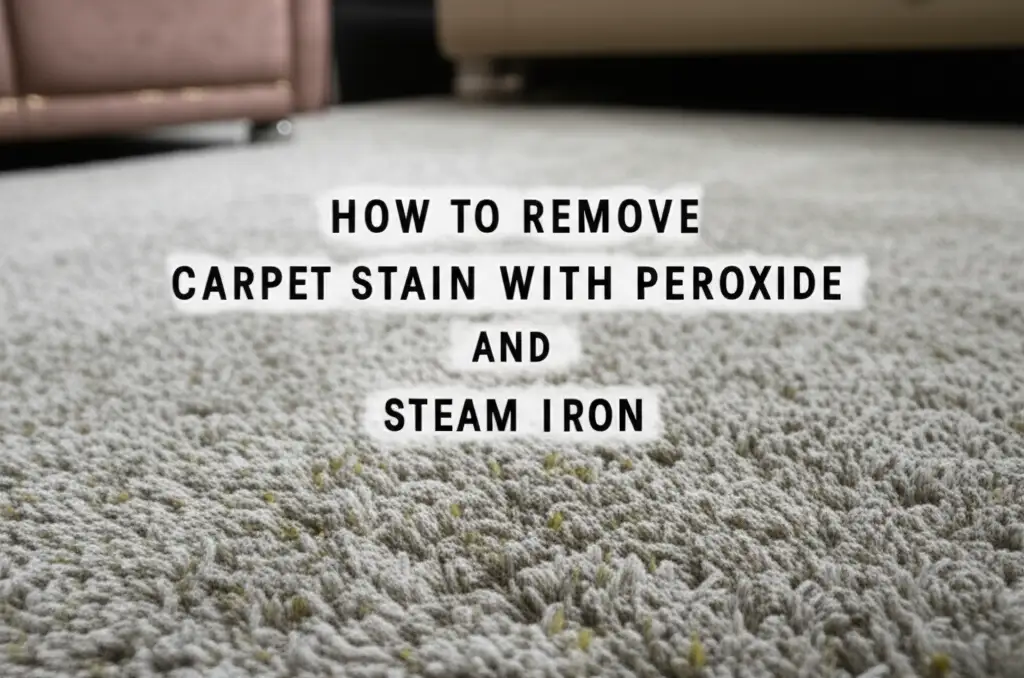· Liora Benning · Home Cleaning · 19 min read
How To Get Out Tea Stains From Carpet

Effortlessly Remove Tea Stains from Your Carpet
Spilled tea on your carpet? It happens to the best of us. That comforting cup of tea can quickly become a dreaded brown mark if not handled quickly. Do not despair when you see that unsightly tea stain staring back at you.
Getting out tea stains from carpet is a common challenge for many homeowners. These stains, especially dark or herbal teas, can look stubborn. The good news is that most tea spills are fixable with the right approach. This guide provides clear, step-by-step methods to help you remove tea stains. We cover everything from fresh spills to old, set-in marks.
Takeaway:
- Act fast on fresh tea stains by blotting, not rubbing.
- Use simple household items like dish soap, vinegar, or baking soda for many spills.
- Address dried tea stains with stronger solutions, like hydrogen peroxide, if carpet material permits.
- Always test cleaning solutions on a hidden area first.
- Know when to call a professional cleaner for large or persistent tea stains.
To get out tea stains from carpet, act quickly by blotting the spill with a clean cloth to absorb as much liquid as possible. Then, apply a gentle cleaning solution, such as a mix of dish soap and water or white vinegar, blotting the area until the stain lifts. Rinse the spot with clean water and blot dry.
Immediate Action: The First Steps to Tackle a Fresh Tea Spill
A fresh tea spill on your carpet can feel like a disaster. However, your immediate reaction determines how easy the stain is to remove. Acting quickly is always the best defense. Do not let the tea soak into the fibers.
The first crucial step is to blot the stain. Grab a clean, white cloth or a stack of paper towels. Press firmly onto the tea stain to absorb the liquid. Avoid rubbing, as this can spread the stain. It can also push the tea deeper into the carpet fibers, making it much harder to remove. Keep blotting with clean sections of the cloth until no more tea transfers.
After blotting, apply a small amount of cold water to the stained area. This helps to dilute the remaining tea. Gently blot the area again to absorb this diluted liquid. This process helps to flush out some of the tea before it fully sets. Remember, cold water is essential; hot water can set the tea stain.
You can also use a mixture of water and a small amount of dish soap for an immediate response. Mix one teaspoon of mild dish soap with two cups of warm water. Dip a clean cloth into this solution and gently blot the stain. Rinse the cloth often and continue blotting. This initial cleaning can lift a significant portion of the tea, preventing it from becoming a permanent fixture on your carpet.
Tried-and-True Methods: Home Remedies for Tea Stain Removal
Once you have blotted the excess tea, it is time to apply a cleaning solution. Several common household products can effectively lift tea stains from your carpet. Always test any solution on a small, hidden area of your carpet first. This step ensures the solution does not cause discoloration or damage.
White Vinegar and Water Solution
White vinegar is a powerful natural cleaner. It works wonders on many types of stains, including tea. Vinegar is mildly acidic, which helps break down the tea pigment. Mix one part white vinegar with two parts water in a spray bottle or bowl.
Lightly spray or dab the solution onto the tea stain. Let it sit for a few minutes to penetrate the fibers. Blot the area gently with a clean, white cloth. Work from the outside of the stain inwards to prevent spreading. Repeat this process, rinsing your cloth frequently, until the stain disappears. Finish by blotting with clean water and drying the area.
Dish Soap and Warm Water
A simple dish soap solution is often effective for fresh tea stains. Use a mild, colorless dish soap to avoid adding new stains. Mix one teaspoon of mild dish soap with two cups of warm water. Stir the mixture gently to combine.
Dip a clean cloth into the solution. Blot the tea stain, pressing down gently. Avoid rubbing, which can spread the tea and damage carpet fibers. As the cloth picks up the tea, use a fresh section. Continue until the tea stain lifts. Rinse the area by blotting with a clean cloth dampened with plain water. This removes any soap residue.
Baking Soda Power
Baking soda is another versatile cleaning agent. It is great for absorbing odors and lifting stains. It also helps with the liquid component of tea stains. For a fresh tea stain, sprinkle a generous amount of baking soda directly onto the wet stain.
Allow the baking soda to sit for several hours, or even overnight. It will absorb the moisture and some of the tea color. Once dry, vacuum up the baking soda. For tougher stains, you can make a paste by mixing baking soda with a small amount of water. Apply the paste to the stain and let it dry before vacuuming. This method can be very effective for drawing out embedded tea particles.
Tackling Stubborn & Dried Tea Stains: When Time Is Not on Your Side
Sometimes, you do not notice a tea spill until it has dried and set into the carpet fibers. Dried tea stains can be more challenging to remove. However, with the right approach and a bit of patience, you can still get your carpet looking clean. These methods are stronger, so always test them in an inconspicuous spot first.
One effective solution for dried tea stains is a hydrogen peroxide mixture. Hydrogen peroxide has bleaching properties that can break down stubborn pigments. Mix one part 3% hydrogen peroxide with three parts water. You can also add a drop or two of mild dish soap for extra cleaning power. Apply this solution to the dried tea stain using a clean cloth or spray bottle. Allow it to sit for 10-15 minutes.
Gently blot the area with a clean cloth. Continue blotting until the stain starts to lift. Rinse the area by blotting with a damp cloth soaked in plain water. It is important to remove all peroxide residue. Hydrogen peroxide is excellent for how to get older stains out of carpet, especially on light-colored carpets. However, avoid using it on dark or delicate carpets as it can cause discoloration. For old, dark beverage stains like coffee, many people wonder are coffee stains permanent on carpet? The good news is, like tea, coffee stains are also often removable with the right techniques.
Another powerful option for set-in tea stains is an enzymatic cleaner. These cleaners contain enzymes that break down organic matter, making them highly effective for biological stains like tea. Follow the product instructions carefully. Typically, you apply the cleaner to the stain, let it sit for the recommended time, and then blot it away. Enzymatic cleaners are often used for can you get old juice stains out of carpet too, as juice stains also contain organic sugars and dyes.
For very tough or large dried tea stains, consider using a carpet steam cleaner with a pre-treatment solution. Some steam cleaners have attachments for spot cleaning. Pre-treat the stain with a commercial carpet stain remover designed for tea or general beverage stains. Then, use the steam cleaner following the manufacturer’s instructions. Always ensure proper ventilation when using chemical cleaners or steam.
Special Considerations for Different Carpet Types
Not all carpets are created equal when it comes to stain removal. The type of fiber your carpet is made from dictates which cleaning methods you can safely use. Understanding your carpet material prevents damage and ensures effective tea stain removal. Always check your carpet manufacturer’s cleaning recommendations before starting.
Wool Carpets: Wool is a natural fiber, known for its durability but also its sensitivity to harsh chemicals. When dealing with a tea stain on a wool carpet, avoid using strong alkaline cleaners or hydrogen peroxide. These can damage the wool fibers or cause discoloration. Instead, opt for mild, pH-neutral solutions. A mixture of mild dish soap and cool water is often safest. Blot gently, do not rub. For how to get urine stains out of a wool rug, similar gentle, enzyme-based cleaners are often recommended to break down organic matter without harming the fibers.
Synthetic Carpets (Nylon, Polyester, Olefin): Most residential carpets are made from synthetic fibers. These are generally more robust and stain-resistant than natural fibers. You can use a wider range of cleaning solutions on synthetic carpets, including white vinegar, dish soap solutions, and even diluted hydrogen peroxide for stubborn tea stains. However, always perform a patch test first. Avoid excessive scrubbing, even on synthetic carpets, as it can fray the fibers. Many cleaning products designed for general how to clean carpet stains pets are also safe for synthetic fibers and can tackle tea.
Delicate or Silk Rugs: Silk rugs and other delicate materials require extreme care. Harsh chemicals, strong scrubbing, or excessive moisture can cause irreversible damage. For tea stains on delicate rugs, it is often best to consult a professional cleaner. If you must attempt it yourself, use minimal moisture and the mildest solutions, like a very diluted, pH-neutral detergent. For specific guidance on how to get stains out of silk rug, special gentle techniques and products are typically recommended. Blotting is key, and never rub. Over-wetting can lead to mold or damage to the rug’s backing.
Berber Carpets: Berber carpets, often made of looped fibers, are durable but can trap liquids within their loops. When cleaning a tea stain on Berber, be mindful of overwetting. Use blotting techniques to absorb moisture from the loops. The methods for synthetic carpets usually apply, but extra care is needed to extract the cleaning solution and moisture thoroughly. Ensuring the carpet dries completely is vital to prevent mildew.
Regardless of carpet type, always work from the outer edge of the tea stain towards the center. This stops the stain from spreading. Proper drying is also crucial. After cleaning, place clean, dry towels over the damp area and weigh them down. This helps absorb remaining moisture. You can also use a fan to speed up the drying process.
When to Call the Professionals: Knowing Your Limits
While many tea stains can be tackled with DIY methods, there are times when professional help is the best course of action. Knowing when to call in experts can save your carpet from irreversible damage and ensure the stain is fully removed. Do not hesitate to contact a professional if your efforts are not yielding results.
Consider professional carpet cleaning services in these situations:
- Large or Extensive Tea Stains: If a significant amount of tea has spilled and saturated a large area of your carpet, it can be challenging to clean effectively yourself. Large spills often penetrate deep into the padding. This requires specialized equipment to extract all the liquid and prevent mildew. Professionals have powerful extraction machines that can reach deep-seated stains.
- Old or Set-In Tea Stains: While we discussed methods for dried tea stains, some older stains are just too stubborn for home remedies. If a tea stain has been on your carpet for a long time, the dye molecules may have bonded strongly with the carpet fibers. Professional cleaners have stronger, commercial-grade solutions and techniques. These can often break down these bonds without damaging your carpet.
- Delicate or Valuable Carpets: High-end carpets, antique rugs, or those made from delicate fibers like silk or certain types of wool require special care. Using the wrong cleaning agent or technique can cause irreparable damage, such as bleeding dyes, fiber distortion, or shrinkage. Professionals are trained to identify carpet materials. They use appropriate, gentle cleaning methods for these valuable items.
- Concerns About Discoloration or Damage: If you notice that your DIY attempts are causing the carpet color to fade, or if the texture of the carpet fibers is changing, stop immediately. These are signs that the cleaning solution or method is too harsh. A professional can assess the damage and use specialized treatments to fix the problem or prevent further harm.
- Lack of Proper Equipment: Deep cleaning tea stains often requires more than just cloths and sprays. Professional carpet cleaners use powerful hot water extraction units (steam cleaners). These machines can rinse and extract cleaning solutions thoroughly. This ensures no residue is left behind, which can attract dirt and cause resoiling.
A professional cleaning service has the expertise and tools to handle challenging tea stains. They can assess your carpet’s material and the stain’s severity. This helps them choose the most effective and safest cleaning method. They also ensure proper drying, which is crucial for preventing mold and mildew. Investing in professional cleaning can extend the life of your carpet. It also keeps your home looking its best.
Preventing Future Tea Stains: Proactive Carpet Care
The best way to deal with a tea stain is to prevent it from happening in the first place. While accidents are inevitable, adopting some proactive measures can significantly reduce the risk of future tea spills on your carpet. A little foresight goes a long way in keeping your carpets clean and stain-free.
One simple yet effective prevention strategy is to use coasters and trays. Always place your tea cups on a stable coaster. This prevents rings and catches minor drips. For multiple cups or when serving tea to guests, use a sturdy tray. A tray provides a contained surface. It makes transportation safer and reduces the chance of a large spill if someone bumps into you. Make it a habit for everyone in your home to use these protective items.
Designate “No Tea” Zones: Consider establishing areas where hot beverages, like tea, are not allowed. This might include high-traffic carpeted areas or specific rooms where spills are more likely. For example, you might decide that tea is only consumed in the kitchen or dining area, or on hard floors. This simple rule reduces exposure for your carpet.
Be Mindful When Carrying Tea: When you carry a hot cup of tea, be fully aware of your surroundings. Walk slowly and deliberately. Avoid carrying too many items at once. Keep pets and small children away from your path to prevent accidental bumps. A momentary distraction can lead to a messy spill. Focus on your steps.
Consider Protective Carpet Treatments: Many carpet manufacturers offer stain-resistant treatments. These treatments create a barrier on the carpet fibers. This makes it harder for liquids, including tea, to penetrate and set. If you are buying new carpet, ask about these options. You can also purchase aftermarket stain protection sprays. Apply these sprays according to the product instructions. Always test them in an inconspicuous area first to ensure they do not alter the carpet’s appearance. These treatments can provide an extra layer of defense against spills.
Clean Regularly: A clean carpet is easier to maintain and can resist stains better. Regular vacuuming removes dirt and debris that can trap spills. Schedule periodic deep cleaning for your carpets. This keeps them fresh and makes future stain removal easier. A well-maintained carpet is less likely to show the signs of a minor tea spill.
By implementing these preventive measures, you create a safer environment for your carpets. You reduce the chances of encountering a dreaded tea stain. It is much easier to prevent a stain than to remove one.
Common Mistakes to Avoid During Tea Stain Removal
When you are trying to get out tea stains from carpet, it is easy to make mistakes that can worsen the problem. Knowing what not to do is just as important as knowing what to do. Avoiding these common errors will help ensure your carpet remains unharmed and the stain is effectively removed.
1. Rubbing the Stain: This is perhaps the most common and damaging mistake. When you rub a tea stain, you push the liquid deeper into the carpet fibers and padding. This makes the stain larger and more difficult to remove. Rubbing also frays the carpet fibers, potentially causing permanent damage to the carpet’s texture. Always blot, do not rub. Blotting lifts the liquid out of the carpet.
2. Overwetting the Carpet: Applying too much water or cleaning solution can saturate the carpet and its padding. Excessive moisture can lead to several problems. It can promote mold and mildew growth underneath the carpet. It can also cause the tea stain to wick back to the surface as the carpet dries. This is often called “wicking.” Use cleaning solutions sparingly and blot often to avoid this issue. Ensure thorough drying after cleaning.
3. Using Hot Water on Fresh Stains: While hot water is good for many cleaning tasks, it can actually set a fresh tea stain. The heat can cause the tea’s tannins (the natural dyes) to bond more firmly with the carpet fibers. Always use cold or cool water for initial blotting and dilution of fresh tea spills. Hot water is sometimes used for dried stains with specific cleaning agents, but not for initial treatment.
4. Skipping the Patch Test: Before applying any cleaning solution to the main stain, always test it on an inconspicuous area of your carpet. This could be a closet corner or under a piece of furniture. Different carpet materials react differently to various chemicals. A patch test prevents discoloration, bleaching, or damage to your carpet. Wait a few minutes after applying the solution to see the reaction.
5. Using Too Much Cleaning Product: More is not always better when it comes to stain removers. Using an excessive amount of detergent or chemicals can leave behind a sticky residue. This residue attracts dirt, causing the cleaned area to become dirty faster than the rest of the carpet. It can also make the area feel stiff. Use only the recommended amount of product. Rinse thoroughly with clean water after cleaning.
6. Mixing Cleaning Products: Never mix different cleaning chemicals unless the product instructions specifically state it is safe. Combining certain chemicals, like bleach and ammonia, can create dangerous fumes. Even less volatile combinations can produce unexpected chemical reactions that damage your carpet or leave a worse stain. Stick to one proven method at a time.
7. Giving Up Too Soon: Some tea stains, especially older ones, require multiple applications and patience. Do not get discouraged if the stain does not disappear after the first attempt. Reapply the cleaning solution, blot, and repeat the process several times. For very stubborn stains, allow the solution to sit for a longer period, then resume blotting. Persistence often pays off.
By avoiding these common mistakes, you increase your chances of successfully removing tea stains. You also keep your carpet in good condition. Taking a cautious and methodical approach is key to effective stain removal.
Frequently Asked Questions About Tea Stains
Q1: Can tea stains be permanently removed from carpet?
Yes, most tea stains can be permanently removed from carpet, especially if addressed quickly. Fresh tea spills are easiest to remove with simple blotting and mild cleaning solutions. Older or dark tea stains may require more potent treatments, like hydrogen peroxide or enzymatic cleaners. Professional cleaning can handle very stubborn cases.
Q2: What household products are best for fresh tea stains?
For fresh tea stains, simple household products are highly effective. A mixture of mild dish soap (one teaspoon) and warm water (two cups) is a great first step. White vinegar diluted with water (one part vinegar to two parts water) also works well. Baking soda sprinkled on a wet stain can absorb moisture and color. Always blot, do not rub.
Q3: How long can a tea stain stay on carpet before it becomes permanent?
A tea stain can become much harder to remove, often described as “permanent,” after a few days to a week, especially if it is not treated at all. The tea’s tannins bond more firmly with carpet fibers over time. However, even old stains can often be lightened or removed with persistent effort or professional help.
Q4: Is hot water or cold water better for tea stains?
For fresh tea stains, cold or cool water is better. Hot water can cause the tea’s tannins to set into the carpet fibers, making the stain more difficult to remove. For dried or old stains, warm water might be used as part of a cleaning solution, but direct hot water on a fresh spill should be avoided.
Q5: Can hydrogen peroxide damage my carpet?
Hydrogen peroxide can be effective on stubborn tea stains, but it can also damage certain carpets. It has bleaching properties and can cause discoloration, especially on dark or delicate carpet fibers like wool or silk. Always dilute hydrogen peroxide (3% solution) and perform a patch test in an inconspicuous area before applying it to the main stain.
Q6: When should I call a professional carpet cleaner for a tea stain?
You should call a professional carpet cleaner if the tea stain is very large or has saturated the carpet padding. Also, if your DIY methods have not worked for an old or stubborn stain, or if you have a delicate or valuable carpet. Professionals have specialized equipment and stronger solutions to safely and effectively remove challenging stains.
Conclusion
Spilling tea on your carpet is a common mishap that can cause immediate distress. However, with the right knowledge and a prompt response, you can effectively get out tea stains from carpet and restore its pristine appearance. We have covered essential steps, from the critical initial blotting for fresh spills to targeted home remedies and advanced techniques for dried tea stains. Remember, acting quickly and avoiding common mistakes like rubbing are key to successful removal.
Always consider your carpet’s material before applying any solution. Test cleaning agents in a hidden spot to prevent damage or discoloration. While many tea stains are manageable with household items, do not hesitate to call a professional for large, old, or delicate carpet stains. With these methods, you are well-equipped to tackle any tea stain that comes your way. Keep your carpet looking fresh and inviting.





